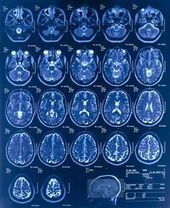
© Punchstock
Researchers in the United States have pinpointed the region of the brain that limits our ability to carry out more than one task at the same time - and have shown how, with training, the brain gets better at multitasking.
"Our brain is lousy at handling multitasking situations," says neuroscientist René Marois of Vanderbilt University in Nashville, Tennessee, who led the work together with Paul Dux, a cognitive scientist who is now at the University of Queensland in Brisbane, Australia. Even if the tasks are very simple, such as walking and chewing gum, "as soon as either needs concentration, we can't do them both without our performance suffering", says Marois.
When we try to pay attention to multiple stimuli - a red traffic light and an SMS alert on a mobile phone, for example - the stream of information flowing from sensation to action gets clogged up. Using a suite of neuroimaging and analysis techniques, Marois, Dux and their colleagues identified a region of the brain that holds up multitasking, and discovered that training gives this region a speed boost.
Easing the bottleneckNeuroimaging studies have previously demonstrated that multitasking increases brain activity in the prefrontal cortex (PFC). This area houses the executive control centres that are responsible for directing our attention to important things in our surroundings and selecting the ideal response. As we practise multitasking, the PFC becomes less active, but it was not clear how this helped - although several ideas have been proposed.
The theory that has received the most attention predicts that when we practise a task, the brain starts to automatically reroute information from the PFC to regions that are more directly involved.
"When we're not familiar with a task, we need all our attention and reasoning," says Marois. According to the theory, he says, "After you practice, the thinking part of your brain is no longer needed, and task performance becomes encoded into the sensory and motor systems."
Another possibility is that the PFC learns to segregate the information to separate groups of neurons. At first, the same ensemble would be responsible for processing two different tasks, but with training, the neurons specialise and process the two tasks in parallel.
A third idea is that the PFC continues to treat the tasks one after the other but learns to do so more quickly, thus shortening the processing queue.
In a study published in the 16 July issue of
Neuron, the team tested each of these theories by scanning people using functional magnetic resonance imaging (fMRI), a technique that tracks neural activity by following blood flow and blood oxygenation in the brain. The participants were scanned before, during and after they were trained to perform two simple tasks at the same time.
First, the researchers searched for regions in the PFC that might limit multitasking performance. By looking for areas that were more active when performing both tasks at once than each on its own, and that became less active as the participants' multitasking skills improved, they honed in on the inferior frontal junction (IFJ). They discovered that communication between the IFJ and other regions did not change as the subjects improved in performance, indicating that neural circuits were not reorganizing to route information away from the region. Neither did they detect any IFJ neurons separating into different groups to process the information streams in parallel during training - ruling out the second hypothesis.
In a final experiment, the authors used a type of fMRI that was able to track changes in neural activity over short periods of time, and discovered a crucial change: with training, the IFJ responded earlier and for a shorter duration than before, indicating it was processing information more quickly. "This suggests our brain becomes better at the task with training, not by reducing the dependence on [the PFC] but rather by improving the processing efficiency [of each task] through this bottleneck," says Marois, who acknowledges that other regions are also likely to be involved.
Other interpretations?The results "push the field in a different direction", says Russ Poldrack, a psychologist at the University of California, Los Angeles. "Most people hadn't thought about this in terms of timing. Most thought of it as switching [from the PFC] to other networks. This is an interesting finding, and a nice way to use convergent methods of fMRI analyses," he says.
Psychologist Kirk Erickson at the University of Pittsburgh in Pennsylvania agrees. "These theories have all been around for a while," he says, "but the difficulty was coming up with ways to test them. Changes in brain-activation patterns can be interpreted in a number of ways. Here they came up with very novel and interesting ways to do this, and really tried to exhaust all alternative possibilities."
But Poldrack also has some reservations. "I'm a little wary of putting too much faith in the null results" - those showing that the IFJ was not getting better at rerouting information to other areas. Other analysis techniques may have produced different conclusions, he notes. "But this is a reasonable first pass, and a good start to resolving this question about why it is that we always see decreases [in PFC activity] when people learn."
References1.Dux, P. E. et al.
Neuron 63, 127-138 (2009).
It just gives me the heeby jeebies to know that all of this brain research is making it possible for the psychopaths in power to figure out how to interfere and destroy our brain's ability to think critically.
They intend to keep us mindless sheeple, who follow their convoluted programming blindly and unquestionably; and some will even do it willingly without the programming.
That's why I'm glad Sott is here giving us this information so that we can see what is being done to us. After all, 'Knowledge Protects'.